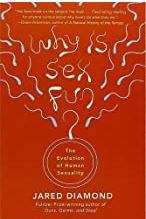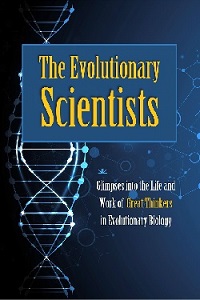|
TRANSLATE THIS ARTICLE
Integral World: Exploring Theories of Everything
An independent forum for a critical discussion of the integral philosophy of Ken Wilber
 David Christopher Lane, Ph.D.
Professor of Philosophy, Mt. San Antonio College Lecturer in Religious Studies, California State University, Long Beach Author of Exposing Cults: When the Skeptical Mind Confronts the Mystical (New York and London: Garland Publishers, 1994) and The Radhasoami Tradition: A Critical History of Guru Succession (New York and London: Garland Publishers, 1992). David Christopher Lane, Ph.D.
Professor of Philosophy, Mt. San Antonio College Lecturer in Religious Studies, California State University, Long Beach Author of Exposing Cults: When the Skeptical Mind Confronts the Mystical (New York and London: Garland Publishers, 1994) and The Radhasoami Tradition: A Critical History of Guru Succession (New York and London: Garland Publishers, 1992).If there's a singular topic Integral students need to be educated on it is evolutionary theory, given their frequent but uninformed use of the term "evolution". These short biographical chapters about evolutionary theorists have been written by different philosophy students of professor David Christopher Lane. (FV)
THE EVOLUTIONARY SCIENTISTS
Glimpses into the Life and Work of Great Thinkers in Evolutionary Biology
Coyne|
Crick|
Darwin|
Dawkins|
Diamond|
Dobzhansky|
Eldridge|
Gould|
Haldane|
Hamilton |
Lamarck|
Lovelock|
Mayr|
Mendel|
Monod|
Spencer|
Trivers |
Wallace |
Weismann |
Williams |
E.O. Wilson
Jared DiamondChen Ling-WangJared Diamond, an American, geographer, anthropologist, and historian, was born on September 10, 1937 in Boston, Massachusetts. He is famously known for his science books, The Third Chimpanzee, Guns, Germs, and Steel, Collapse, and Upheaval. He is currently a professor of geography at UCLA.  Jared Diamond He earned his B.A degree in anthropology and history from Harvard College in 1958 and a Ph.D. on the physiology and biophysics of membranes in the gallbladder from Trinity College, the University of Cambridge in 1961. After graduating from Cambridge, Diamond became a professor of physiology at UCLA Medical School. He developed his second career in ornithology and ecology in his twenties. Later in his fifties, he developed a third career in environmental history and became a professor of geography at UCLA. Jared Diamond specialized in salt absorption in the gallbladder. He also published scholarly works in the fields of ecology and ornithology. He has done extensive fieldwork in ecology and evolution of birds in New Guinea by traveling back and forth to that island and other regions. His earlier books dealt with the subjects of ornithology, New Guinea, ecology, and evolution. He is best known for his number of popular-science books, which combine topics from a variety of fields and present unique theories about how and why we evolved the way we did. The Third Chimpanzee (1991) is Diamond's first popular book. In it he examines human evolution and the relations between the modern world, including evidence from anthropology, evolutionary biology, genetics, ecology, and linguistics. The book outlines the differences between human evolution and other animals. Moreover, the book also examines the origins of language, art, agriculture, smoking and drug use, and other uniquely human attributes. It was highly praised by critics and won the 1992 Rhone-Poulenc Prize for Science Books and the Los Angeles Times Book Prize. Diamond's best-known book, Guns, Germs, and Steel, was published in 1997. He found out the reasons behind why the Eurasian peoples had won wars were not because of biological advantages, but rather because of the features surrounding the Eurasian region. The regions' high diversity of wild plant and animal species are suitable for living, and the locations of the east and west major axis gave a big advantage of favoring the spread of people and technologies for further, long distances. The first part of the book focuses on reasons why only a few species of wild plants and animals were suitable for a good standard of living. The second part discusses how local food production led to the development of compact and layered human populations, centralized political organization, and epidemic infectious diseases. The third part compares the development of food production and human societies among different continents and world regions. Guns, Germs, and Steel was an international best-seller and was translated into 33 languages. It has received several awards, including a Pulitzer Prize and the Phi Beta Kappa Award in science. A television documentary series based on the book was produced by the National Geographic Society in 2005. Collapse: How Societies Choose to fail or succeed (2005), examines a range of past societies in an attempt to identify why they either collapsed or continued to thrive and considers what contemporary societies can learn from these historical examples. As in Guns, Germs, and Steel, Jared Diamond argues against explanations for the failure of past societies based primarily on cultural factors, instead focusing on ecology. Among the societies mentioned in the book are the Norse and Inuit of Greenland, the Maya, the Anasazi, the indigenous people of Easter Island, Japan, Haiti, the Domincian Republic, and modern Montana. The book concludes by asking why some societies make destructive decisions, how large businesses affect the environment, what our principal environmental problems are today, and what individuals can do about those problems. Similar to Guns, Germs, and Steel, Collapse was also translated into dozens of languages, and became an international best-seller. It was also produced on the National Geographic Society television documentaries, and has also been nominated for the Royal Society Prize for Science Books. In Upheaval, Jared Diamond examines crisis resolution through a personal perspective. Jared Diamond gathered ideas from history and psychology in order to see a way forward. He concludes the book by focuses on what crisis the United States and the world might be forced to consider with in the coming years. “All nations are facing a crisis [which] involve nuclear weapons, inequality and climate change,” Diamond claims, “while the U.S. must deal with our issues of political polarization, low voter turnout, obstacles to voter registration, inequality, limited socio-economic mobility, and decreasing government investment in public goods.” Furthermore, Michael Schaub writes, “Diamond is an endlessly engaging writer, and the experience of reading Upheaval is similar to taking a college course from a professor who's as charming as he is polymathic.” Diamond's idea on how our nation might navigate its path forward is fascinating reading for anyone anxious about the state of the republic today. He states, “There is no way that China or Mexico can destroy the U.S," but then warns: "Only we Americans can destroy ourselves." However, Anand Giridharadas, the reviewer for The New York Times, pointed out many factual inaccuracies. Daniel Immerwahr, another reviewer from The New Republic, reported that Diamond's latest lacks the statistical analysis that was prevalent in his earlier work. Despite such criticism (which he has responded to in detail) Jared Diamond is by any measure a great evolutionist. He is an expert in a wide variety of fields, including physiology, geography and history, and his ability to draw from each of the specific topic in a clear sense to readers is unquestionable and extraordinary. Further Reading1. Why is Sex Fun, Basic Books; First Edition edition (September 25, 1998) 2. Guns, Germs, and Steel: The Fates of Human Societies, W. W. Norton & Company; 1 edition (March 7, 2017) 3. Collapse: How Societies Choose to Fail or Succeed, Penguin Books; Revised edition (January 4, 2011)
   MSAC Philosophy Group
The theory of evolution has a long history. However, it was not until Charles Darwin and Alfred Russel Wallace discovered that the wide variety of species we presently see were largely the result of natural selection did evolutionary studies have a solid, scientific basis. In the past one hundred and sixty years, a number of eminent biologists have contributed to our understanding of how complex life forms emerged from simpler, more rudimentary ones.
Comment Form is loading comments...
|